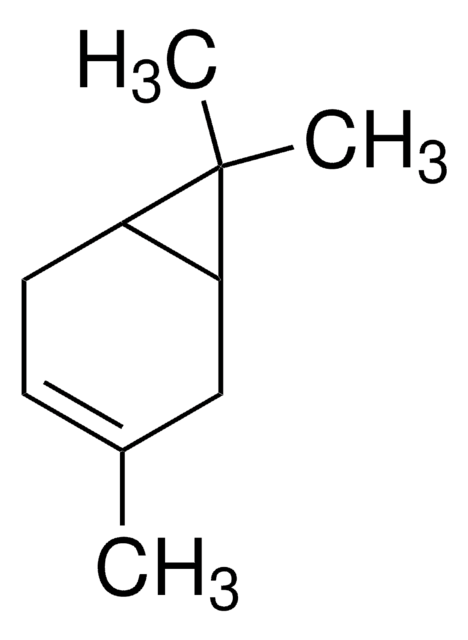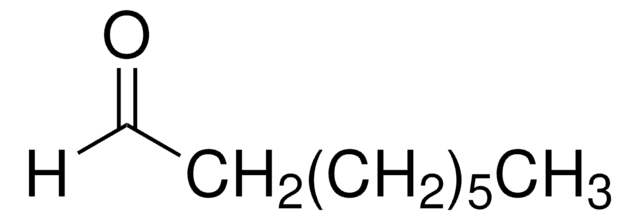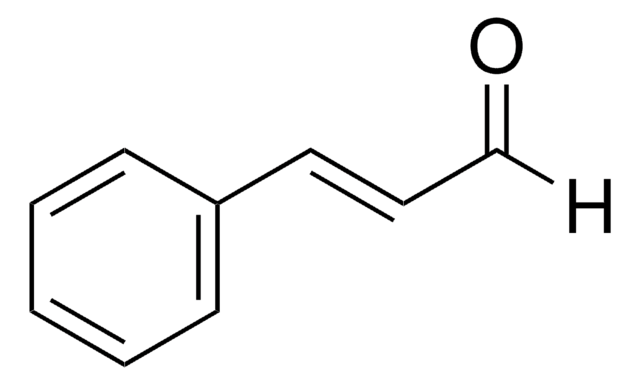43318
Citral
analytical standard
Sinónimos:
3,7-Dimethyl-2,6-octadienal, Geranial and neral mixture
About This Item
Productos recomendados
grade
analytical standard
Quality Level
vapor density
5 (vs air)
vapor pressure
0.2 mmHg ( 200 °C)
assay
≥95.0% (cis + trans, GC)
shelf life
limited shelf life, expiry date on the label
technique(s)
HPLC: suitable
gas chromatography (GC): suitable
refractive index
n20/D 1.487-1.489
n20/D 1.488 (lit.)
bp
229 °C (lit.)
density
0.888 g/mL at 25 °C (lit.)
suitability
conforms to structure for Proton NMR spectrum
application(s)
cleaning products
cosmetics
environmental
flavors and fragrances
food and beverages
personal care
format
neat
storage temp.
2-8°C
SMILES string
[H]C(=O)C=C(C)CC\C=C(\C)C
InChI
1S/C10H16O/c1-9(2)5-4-6-10(3)7-8-11/h5,7-8H,4,6H2,1-3H3
InChI key
WTEVQBCEXWBHNA-UHFFFAOYSA-N
¿Está buscando productos similares? Visita Guía de comparación de productos
General description
Application
- Essential oils using reversed-phase high performance liquid chromatography with photodiode array detection (RP-HPLC-PDA), further confirmed by gas-chromatography coupled to mass spectrometry (GC-MS).
- Cymbopogon citratus volatile oil using high performance liquid chromatography with UV detection (HPLC-UV) and gas chromatography coupled to mass spectrometry (GC-MS).
signalword
Warning
hcodes
Hazard Classifications
Eye Irrit. 2 - Skin Irrit. 2 - Skin Sens. 1
Storage Class
10 - Combustible liquids
wgk_germany
WGK 1
flash_point_f
208.4 °F - DIN 51758
flash_point_c
98 °C - DIN 51758
ppe
Eyeshields, Faceshields, Gloves, type ABEK (EN14387) respirator filter
Elija entre una de las versiones más recientes:
¿Ya tiene este producto?
Encuentre la documentación para los productos que ha comprado recientemente en la Biblioteca de documentos.
Los clientes también vieron
Nuestro equipo de científicos tiene experiencia en todas las áreas de investigación: Ciencias de la vida, Ciencia de los materiales, Síntesis química, Cromatografía, Analítica y muchas otras.
Póngase en contacto con el Servicio técnico









